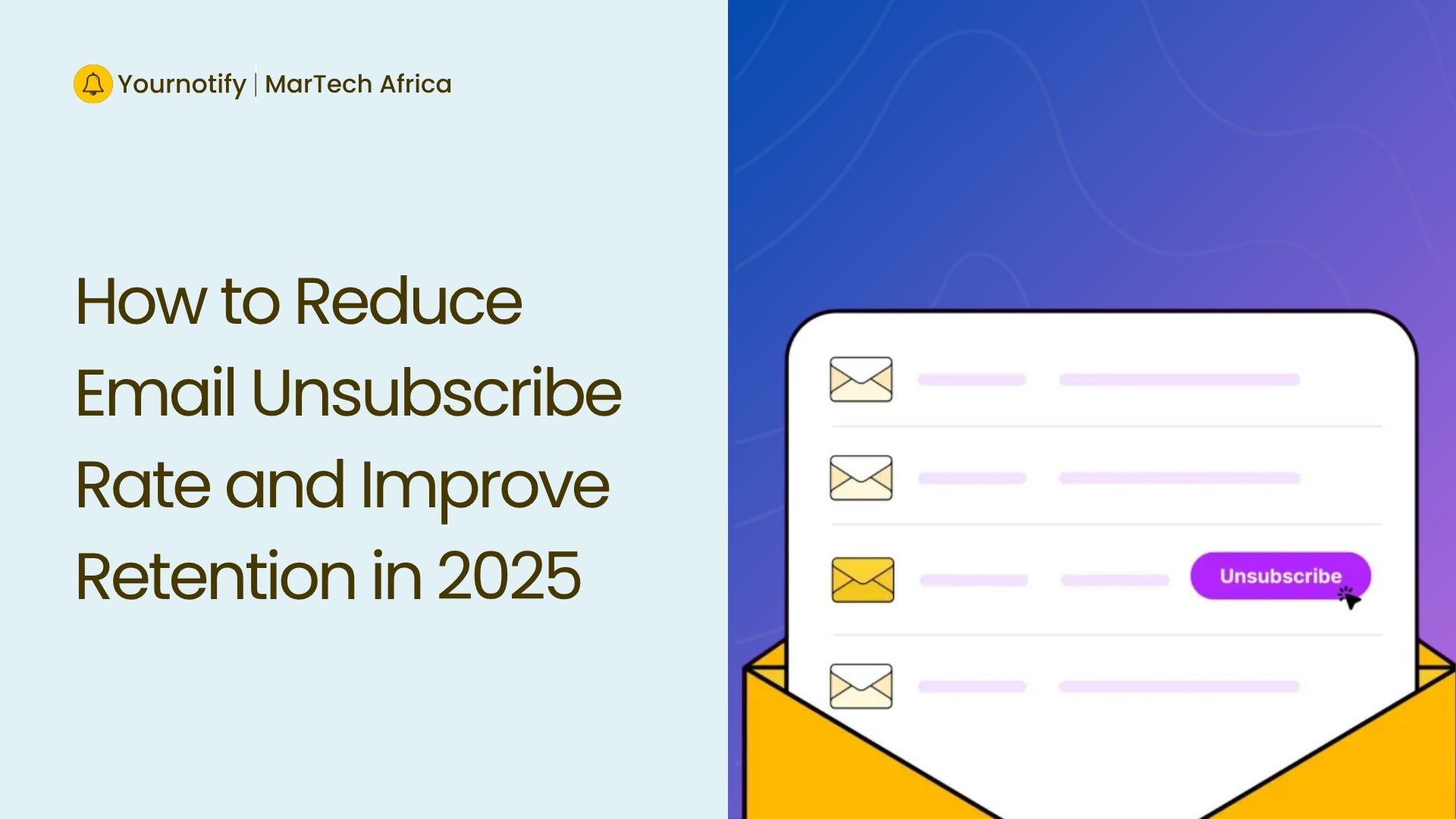Sending your customers the right messages, and at the right time is critical to their…

How to Reduce Email Unsubscribe Rate and Improve Retention in 2025
Email marketing is one of the most effective ways to communicate with your audience and build lasting relationships. However, a high email unsubscribe rate can seriously undermine the effectiveness of your email campaigns. If you’re noticing that your email list is thinning out or your engagement rates are dropping, it’s time to take a closer look at how to reduce unsubscribes and improve email retention.
What is Email Unsubscribe Rate
The email unsubscribe rate refers to the percentage of people who choose to stop receiving emails from you after opening one of your campaigns. In simple terms, it tells you how many subscribers are clicking the “unsubscribe” link and opting out of your mailing list.
This rate is calculated by dividing the number of unsubscribes by the number of emails delivered, then multiplying the result by 100 to get a percentage. For example, if you send out 1,000 emails and 10 people unsubscribe, your unsubscribe rate is 1%.
Understanding your unsubscribe rate is important because it gives insight into how your audience feels about your emails. A consistently high rate might be a red flag that your content isn’t hitting the mark, you’re sending too many emails, or subscribers didn’t get what they expected when they signed up. On the other hand, a low unsubscribe rate usually indicates that your audience finds your content valuable and wants to stay connected.
Here’s how to reduce email unsubscribe rate and keep your subscribers engaged and coming back for more.
1. Segment Your Email List
Segmentation is key to sending the right content to the right people at the right time. By dividing your email list into smaller, targeted groups, you can tailor your content to meet the specific needs and interests of each group. This ensures your subscribers receive relevant emails, which in turn reduces the likelihood of unsubscribes.
For example, you could segment by:
- Demographics (age, location, etc.)
- Behavioral data (purchase history, website interactions)
- Engagement levels (active vs. inactive subscribers)
By personalizing your approach, your audience will relate more to the message you are passing across to them because they find it relevant to their activities.
2. Use a Compelling Subject Lines
The first thing your subscribers see when they receive your email is the subject line. If it’s unappealing or too vague, they’ll likely hit the unsubscribe button without even opening it. To reduce email unsubscribe rate, make sure your subject lines are: Clear and concise, intriguing without being misleading and tailored to your audience’s interests
Use action verbs and make your subject lines relevant to the content inside the email. For example: “Unlock 30% Off Your Next Purchase” or “Here’s What You Missed This Week.”
3. Provide Value in Every Email
If your subscribers aren’t finding value in your emails, they’ll quickly lose interest and unsubscribe. Your emails should deliver value in every message. It could be exclusive discounts, helpful tips and guides, relevant industry news or behind-the-scenes updates
Keep your audience in mind and ask yourself: What’s in it for them? If you consistently offer something useful or exciting, subscribers will have a reason to stay.
4. Optimize for Mobile Devices
More than half of emails are opened on mobile devices, so ensuring that your emails are mobile-friendly is crucial for retention. If your emails aren’t optimized for mobile, they may look messy, be hard to read, or have broken links, leading to frustrated subscribers who decide to unsubscribe.
Here’s what to do:
- Use responsive email templates that adjust to screen size.
- Keep your text concise with clear calls-to-action (CTAs).
- Test your emails on different devices to ensure they look great everywhere.
5. Set Expectations Early
If subscribers don’t know what kind of content to expect from your emails, they may feel overwhelmed or confused, leading to unsubscribes. Be upfront with your audience about what they’ll receive when they sign up for your list. Let them know whether they’ll get weekly newsletters, promotional offers, or industry insights.
Welcome emails are a great opportunity to set these expectations and build a positive first impression. It’s also a great chance to ask for additional preferences so you can better tailor future messages.
6. Re-engage Inactive Subscribers
Not all subscribers will engage with every email you send, but that doesn’t mean they’re ready to unsubscribe. Some may have simply lost interest or been distracted. To improve retention, consider sending re-engagement emails to those who haven’t opened or clicked on your emails in a while.
Here are some ideas:
- Send a survey to find out what they like or don’t like about your emails.
- Offer an incentive like a discount or freebie to encourage them to come back.
- Remind them of the value your emails provide, such as exclusive content or special offers.
A simple “We Miss You” email can sometimes be enough to re-engage a lapsed subscriber.
7. Allow Easy Unsubscribing Options
It might sound counterintuitive, but making the unsubscribe process easy actually improves retention. If subscribers can’t easily unsubscribe, they may become frustrated and mark your emails as spam instead. By making the process clear and easy, you’ll retain your credibility and trust with your audience.
At the same time, consider adding a preference center where users can adjust their email frequency or content preferences instead of unsubscribing altogether. This way, you can retain subscribers while giving them more control over what they receive.
8. Test and Optimize Your Emails
Finally, constantly test and optimize your email campaigns. A/B testing allows you to experiment with different subject lines, CTAs, content types, and sending times to see what resonates most with your audience. By analyzing open rates, click-through rates, and unsubscribe rates, you can make informed adjustments to improve your future campaigns.
Reducing unsubscribes and improving email retention is all about delivering value, personalizing content, and keeping the user experience in mind. By segmenting your audience, optimizing your emails for mobile, setting clear expectations, and continually testing your strategies, you’ll build stronger, more engaged email lists. Remember, every email is an opportunity to strengthen your relationship with your audience.
Related Content
